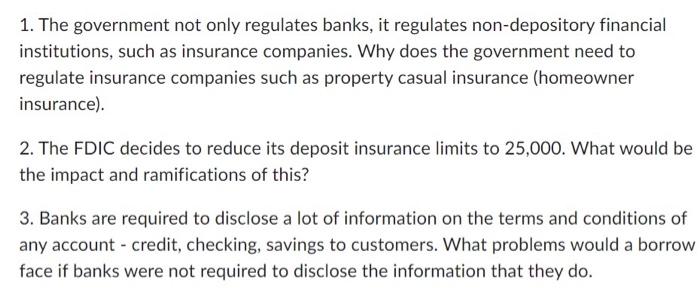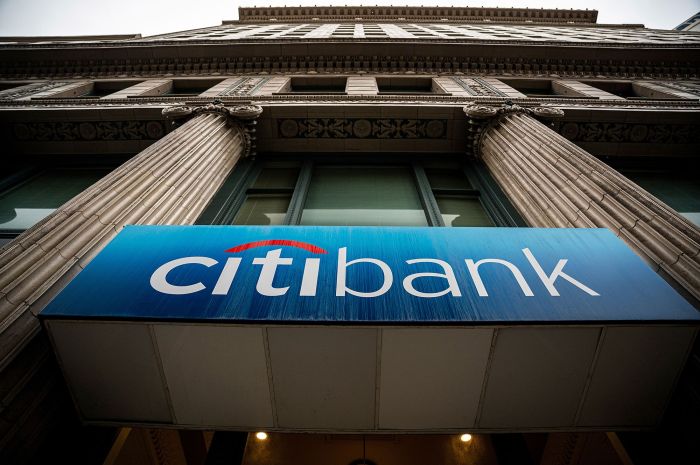Is CIT Bank federally insured? Absolutely! This crucial question sits at the heart of financial security for many. Understanding the intricacies of FDIC insurance, especially regarding a bank like CIT, is paramount to protecting your hard-earned savings. This exploration will unravel the details of CIT Bank’s insurance coverage, comparing it to other institutions and empowering you to make informed decisions about your financial future.
We’ll delve into the specifics of deposit limits, account types covered, and the regulatory framework ensuring your peace of mind.
CIT Bank, like many other banks in the United States, participates in the Federal Deposit Insurance Corporation (FDIC) insurance program. This means that your deposits are protected up to a certain limit, offering a significant safety net against potential financial instability. We’ll clarify what this protection entails, how it works in practice, and how you can maximize your coverage.
By the end, you’ll possess a clear understanding of your rights and the safeguards in place to protect your money.
CIT Bank and FDIC Insurance: Your Makassar-Style Guide
Yo, Makassar! Let’s talk about keeping your duit safe. This ain’t your grandma’s banking lesson; we’re breaking down CIT Bank’s insurance status in a way that’s easy to understand, even if you’re more into coto Makassar than complex financial jargon. We’ll cover everything from FDIC protection to comparing CIT Bank with other institutions, so you can chill knowing your money’s protected.
FDIC Insurance Coverage at CIT Bank
The Federal Deposit Insurance Corporation (FDIC) is like the superhero of your savings. It’s a government agency that insures deposits in banks, meaning if the bank goes belly up, the FDIC steps in to protect your money. CIT Bank is FDIC-insured, so your deposits are covered up to a certain limit.
FDIC’s Role in Protecting Bank Deposits, Is cit bank federally insured
The FDIC’s main job is to maintain stability and public confidence in the US banking system. They do this by insuring deposits, so even if a bank fails, depositors don’t lose their money (up to the insured amount). This prevents bank runs and keeps the financial system running smoothly.
Specific FDIC Insurance Coverage
The FDIC insures various deposit accounts, including checking accounts, savings accounts, and money market accounts. The coverage is per depositor, per insured bank, not per account. This means if you have multiple accounts at CIT Bank, the FDIC coverage limit applies to the total of all your accounts at that bank.
Deposit Insurance Limits and Application
Currently, the FDIC insures deposits up to $250,000 per depositor, per insured bank, for each account ownership category. This means if you have a joint account with someone, you each get $250,000 in coverage. If you have multiple accounts with different ownership categories (e.g., individual, joint, trust), the coverage limit applies to each category separately.
Yes, Cit Bank’s deposits are federally insured, providing a safety net for your hard-earned money. To understand the depth of their commitment to financial stability, it’s helpful to know their history; check out this link to see just how long has cit bank been in business , which speaks volumes about their experience and reliability. This long-standing presence reinforces the security of your funds, ensuring peace of mind with your Cit Bank accounts.
So, rest assured, your money is protected.
Account Types Covered and Not Covered
Most common deposit accounts are covered. However, things like investments, stocks, and bonds are generally not FDIC-insured. Always check the fine print on your account agreement to be sure.
FDIC Coverage Comparison Table
| Bank | Deposit Insurance | Coverage Limit | Notes |
|---|---|---|---|
| CIT Bank | FDIC | $250,000 per depositor, per insured bank | Standard FDIC coverage |
| Bank of America | FDIC | $250,000 per depositor, per insured bank | Standard FDIC coverage |
| Chase | FDIC | $250,000 per depositor, per insured bank | Standard FDIC coverage |
| Wells Fargo | FDIC | $250,000 per depositor, per insured bank | Standard FDIC coverage |
CIT Bank’s Regulatory Framework and Your Protection
Knowing that CIT Bank operates under strict regulatory oversight is reassuring. This framework contributes significantly to depositor protection and builds trust in the institution.
Regulatory Bodies Overseeing CIT Bank
CIT Bank is regulated by several federal and state agencies, including the FDIC, the Office of the Comptroller of the Currency (OCC), and potentially state banking authorities depending on its operating locations. These agencies ensure compliance with banking regulations and protect consumers.
Regulatory Compliance and Depositor Protection
CIT Bank’s adherence to these regulations is crucial for depositor protection. Regular audits and inspections help maintain the bank’s financial stability and ensure it meets the required standards for FDIC insurance.
Key Regulations for Deposit Insurance and Consumer Protection
- FDIC regulations concerning deposit insurance coverage limits and eligibility.
- Consumer Financial Protection Bureau (CFPB) regulations protecting consumers from unfair or deceptive banking practices.
- OCC regulations regarding capital adequacy and risk management.
Resources to Verify CIT Bank’s Regulatory Standing
- FDIC website: Check the FDIC’s BankFind tool to confirm CIT Bank’s insurance status.
- OCC website: Review CIT Bank’s regulatory information on the OCC’s website.
- CIT Bank’s website: Look for information on regulatory compliance and disclosures on CIT Bank’s official website.
Comparing CIT Bank with Other Insured Institutions
Understanding how CIT Bank’s insurance stacks up against other financial institutions gives you a clearer picture of your risk profile. Let’s compare apples to apples (and oranges, too!).
CIT Bank vs. Credit Unions
Both CIT Bank and credit unions can offer FDIC insurance (or NCUA insurance for credit unions), but credit unions are member-owned and often have a more community-focused approach. The insurance coverage limits are generally similar.
CIT Bank vs. Smaller Regional Banks
Smaller regional banks also typically offer FDIC insurance. The coverage limits are the same, but the level of personal service might differ. Larger banks like CIT might have more resources and a wider range of services.
US Bank Insurance vs. International Schemes
The US FDIC system differs from insurance schemes in other countries. Some countries have government-backed insurance programs, while others may rely on private insurance or a combination of both. Coverage limits and eligibility criteria vary significantly across nations.
Insurance Coverage Comparison Table

Source: cheggcdn.com
| Institution Type | Insurer | Coverage Limit (USD) | Notes |
|---|---|---|---|
| CIT Bank (Commercial Bank) | FDIC | $250,000 | Standard FDIC coverage |
| Credit Union | NCUA | $250,000 | National Credit Union Administration insurance |
| Small Regional Bank | FDIC | $250,000 | Standard FDIC coverage |
Protecting Your Deposits at CIT Bank: Is Cit Bank Federally Insured
Taking proactive steps to protect your deposits, even with FDIC insurance, is always a smart move. Let’s equip you with the knowledge to safeguard your hard-earned cash.
Verifying FDIC Insurance Coverage
- Visit the FDIC’s BankFind tool on their website (fdic.gov).
- Enter CIT Bank’s name and location.
- Verify that CIT Bank is listed as an FDIC-insured institution.
Maximizing FDIC Insurance Coverage

Source: ellingtoncms.com
To maximize your FDIC coverage, consider diversifying your deposits across multiple banks and account ownership categories (individual, joint, trust). This allows you to benefit from the full coverage limit for each category.
Protecting Yourself from Banking Risks
- Keep track of your account statements regularly.
- Report any suspicious activity immediately.
- Choose banks with strong financial stability and a good reputation.
- Understand the terms and conditions of your accounts.
Understanding FDIC Information
The FDIC’s website is your best resource for understanding their insurance program. Familiarize yourself with their publications and FAQs to stay informed.
Illustrative Scenarios of FDIC Coverage
Let’s look at some real-world examples to clarify how FDIC insurance works at CIT Bank.
Scenario: Fully Covered Deposits
Andi has $200,000 in a savings account at CIT Bank. If CIT Bank fails, Andi’s entire deposit is fully covered by the FDIC.
Scenario: Deposits Exceeding Limits

Source: the-sun.com
Budi has $350,000 in a checking account at CIT Bank. Only $250,000 is FDIC-insured. If CIT Bank fails, Budi will receive $250,000 from the FDIC, and the remaining $100,000 would be lost.
Visual Representation of Insured/Uninsured Deposits
Imagine a bar graph. The total length represents the total deposit amount. A portion of the bar is shaded to represent the FDIC-insured amount (up to $250,000), while the unshaded portion represents the uninsured amount.
Claiming Insurance Coverage in Case of Bank Failure
If CIT Bank were to fail, you would need to file a claim with the FDIC. The FDIC’s website provides detailed instructions on how to do this. The process generally involves providing documentation to prove your ownership of the deposits.
Wrap-Up
Protecting your financial future requires knowledge and awareness. Understanding the intricacies of FDIC insurance at CIT Bank, as we’ve explored, is a critical step in that process. By grasping the deposit limits, the types of accounts covered, and the regulatory oversight, you can confidently manage your finances knowing your deposits are largely protected. Remember to always verify your coverage and utilize strategies to maximize the FDIC’s insurance benefits.
Take control of your financial well-being; your peace of mind is invaluable.